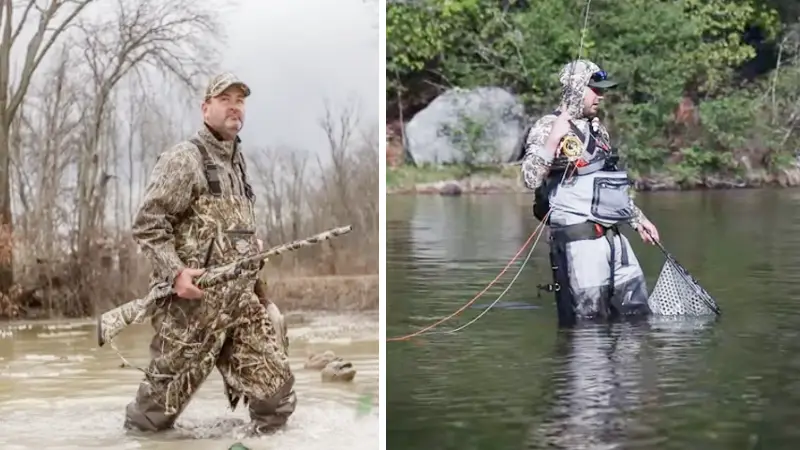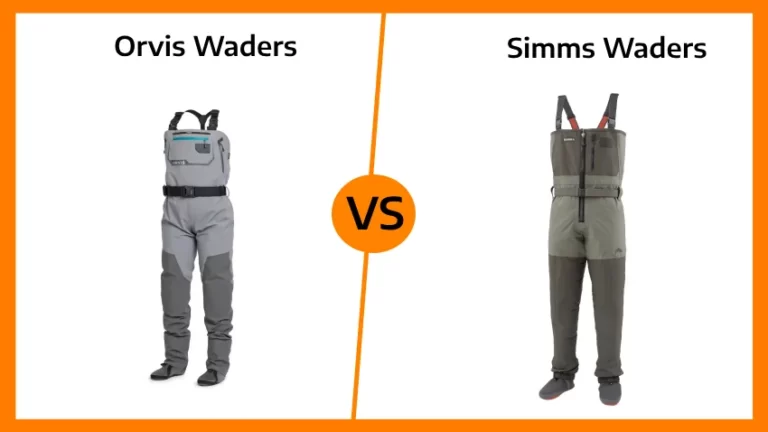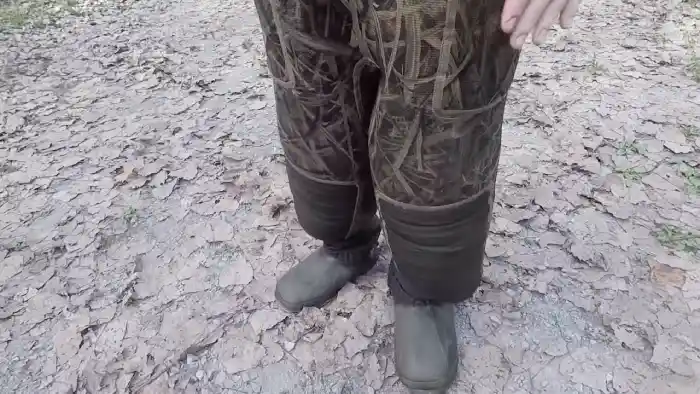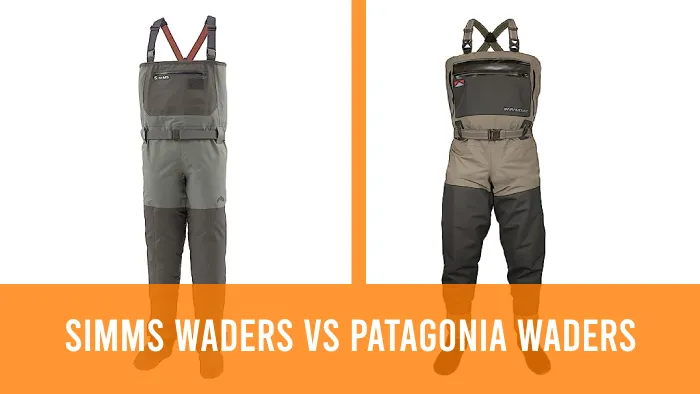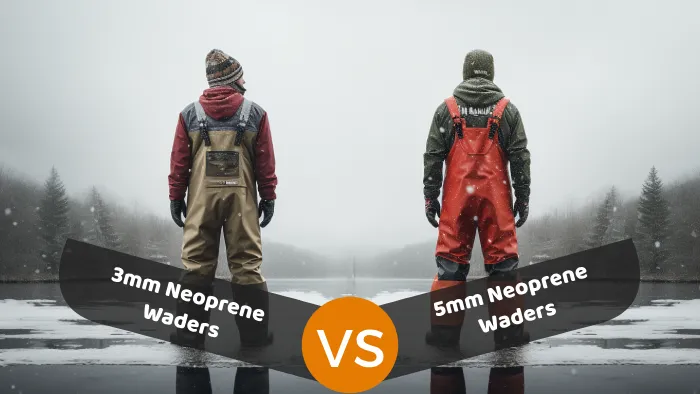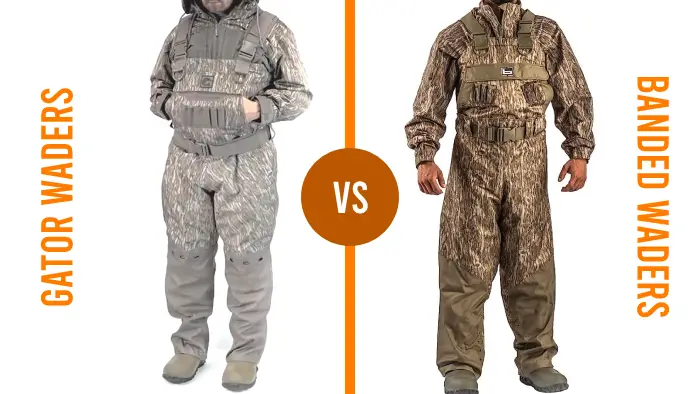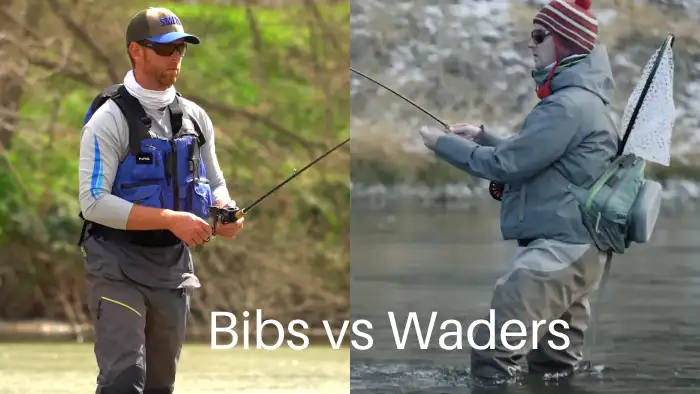Hunting vs Fishing Waders: 8 Key Differences
A good pair of waders is an essential piece of equipment for hunting and fishing. But bear in mind that hunting and fishing waders are different. While they may appear similar at first glance, key differences make each type of wader specifically designed for its respective activity.
The construction material varies between the two types. Hunting waders are typically made from a more durable material (thick Neoprene) to withstand rugged terrains, while fishing waders are often constructed with lightweight materials (GoreTex or nylon) for increased mobility.
Also, the design of the waders differs, with hunting waders featuring camouflage patterns and additional pockets for ammunition, whereas fishing waders are designed for easy movement and often have built in gravel guards.
Today we will explore the differences between fishing and hunting waders and what to look for when buying each. Whether you’re a seasoned hunter or an avid angler, continue reading to understand the distinctions between these two types of waders.
The Differences Between Hunting and Fishing Waders
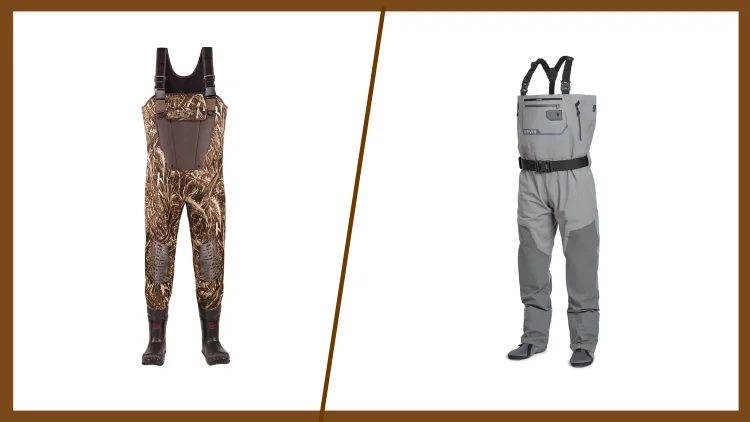
Regarding hunting and fishing waders, there are several key differences to consider.
- Construction material
- Waders design
- Waders purpose
- Insulation level
- Waders length
- Tread design
- Waders color
- Cost comparison
1. Construction Material
Crafted from sturdy thick neoprene and breathable nylon, hunting waders ward off the harsh elements while fishing waders offer the flexibility needed for smooth casting and movement.
The construction material of hunting waders, such as neoprene, provides exceptional insulation, keeping you warm and protected in rough terrains and cold weather conditions. The thick and sturdy nature of hunting waders makes them highly durable, ensuring they can withstand the demands of hunting activities.
Conversely, fishing waders are made of lighter materials like nylon or GoreTex, which allows for breathability and freedom of movement. This lightweight construction makes fishing waders suitable for long hours of casting and maneuvering in various fishing environments.
2. Waders Design
The design of hunting and fishing waders differ significantly. Hunting waders are specifically designed to blend seamlessly into the natural surroundings with their camouflage patterns. This allows the wearer to stay concealed while approaching the game, increasing their chances of a successful hunt.
Alternatively, fishing waders do not have a specific design requirement. They typically come in plain or bright colors, making them easily visible in emergencies or accidents.
Also, fishing waders often have extra features like pockets for bait and lures, providing convenient storage options for fishermen. These additional features enhance the functionality of fishing waders and make them more suitable for the specific needs of anglers.
3. Waders Purpose
Waders are created to keep you dry and warm in wet environments, providing traction and support for outdoor activities. When considering hunting waders, they primarily aim to keep you dry and warm while strolling through wetlands, swamps, or standing in water during your hunting adventures.
They are specifically designed to withstand hunting challenges, offering good traction on slippery surfaces and support to keep you steady.
Then again, fishing waders are tailored for various fishing activities like fly fishing, baitcasting, and shore fishing. Their main goal is to keep you dry and comfortable while giving you the flexibility and freedom of movement to cast your line and reel in your catch.
4. Insulation Level
In terms of insulation, hunting waders are the superior choice. Designed specifically for cold temperatures, these waders are thicker and better insulated than fishing waders. The extra insulation in hunting waders ensures your body heat is trapped inside, keeping you warm even in freezing temperatures.
In contrast, fishing waders are designed to be versatile and suitable for various weather conditions, which means they may provide less insulation than hunting waders. To give you a better idea of the insulation levels, take a look at the table below:
| Wader Type | Insulation Level |
| Hunting | High |
| Fishing | Moderate |
5. Waders Length
Regarding wader length, there are some key factors to consider for hunting and fishing.
Hip waders, also known as waist-high waders, are designed to keep you dry up to your waist while hunting. They are commonly preferred by hunters who hunt ducks in moderate moving streams. These waders provide enough protection to keep you comfortable without restricting your movements.
Conversely, chest waders, as the name suggests, offer full coverage up to your chest while fishing. They are ideal for deeper fishing situations where you may need to wade deeper waters. Chest waders provide maximum protection and are perfect for those who want to venture into more challenging fishing environments.
6. Tread Design
Hunting waders’ tread design differs from fishing waders. Regarding hunting and fishing waders, the tread design is crucial for providing optimal traction and support in slippery and rocky conditions.
Hunting waders usually have well treaded boots that provide good traction and support on slippery and rocky surfaces. Fishing waders usually have sole traction systems for various water terrains, including rocks, mud, and sand.
Here are some key features of the tread design on hunting & fishing waders:
- Aggressive lugs: These deep and widely spaced lugs are designed to dig into the ground, giving you an excellent grip on uneven and muddy surfaces while fishing or hunting.
- Self Cleaning channels: The tread pattern includes channels that help to shed mud and debris, preventing them from accumulating and reducing traction.
- Multidirectional treads: The tread design often incorporates multidirectional patterns, allowing you to confidently navigate different terrain, whether climbing steep slopes or traversing through thick underbrush.
7. Waders Color
Blending seamlessly with nature, the color of waders takes on the hues of the surrounding environment, allowing hunters to become one with their surroundings.
Hunting waders come in various camouflage patterns designed to match different terrains such as grasslands, forests, or marshes. These patterns mimic the natural colors and textures of the landscape, providing optimal concealment.
Conversely, fishing waders are usually available in solid colors. While some brands offer brighter colors for visibility, most prefer muted tones to avoid spooking fish. This allows fishermen to blend in with the water and minimize their presence.
8. Cost Comparison
Hunting waders are more expensive due to their superior quality and durability. These waders are designed to withstand harsh conditions and provide maximum protection during hunting expeditions.
In contrast, fishing waders are more affordable, with prices varying based on the material, design, and brand. While they may not offer the same level of durability as hunting waders, fishing waders are still built to withstand angling demands and provide adequate protection.
What to look for when buying hunting waders?
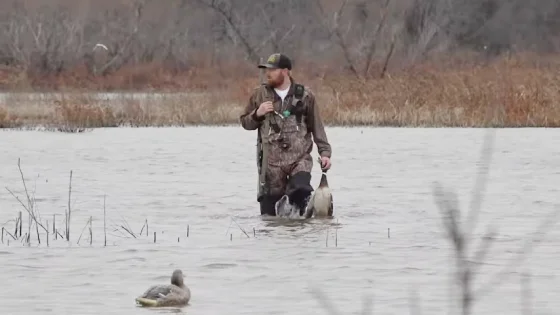
When choosing hunting waders, look for chest waders that are 100% waterproof and made from a breathable, multilayered fabric construction or, ideally, neoprene. This is important because waterfowl hunting often involves wet and muddy environments, so you want waders to keep you dry and comfortable.
Neoprene waders, like wetsuits, are particularly popular because they offer excellent insulation and flexibility. They provide warmth even in cold water and allow easy movement, which is essential for hunting.
Also, choose waders with reinforced knees and seat areas for added durability. Look for waders with adjustable straps and buckles for a secure and customizable fit. Consider the boot features, such as insulation and traction, to ensure stability and comfort during hunting expeditions.
What to look for when buying fishing waders?
To ensure your fishing experience is comfortable and enjoyable, imagine slipping into a pair of waders that feel like a second skin, allowing you to glide through the water while staying dry and cool. When buying fishing waders, there are a few important factors to consider.
- Comfort is key: Look for waders that have adjustable straps, neoprene booties, and a relaxed fit that won’t restrict your movement.
- Durability is also crucial: You want waders that can withstand the wear and tear of fishing trips. Opt for waders made from high quality materials like breathable nylon or GoreTex, which are both lightweight and tough.
- Breathability is essential: To keep you comfortable during long hours on the water. Look for waders with breathable fabrics and integrated ventilation systems to prevent overheating and perspiration buildup.
Are hunting and fishing waders the same?
Wear a pair of waders that keep you dry and cool as you glide through different environments. There are some similarities in hunting and fishing waders, but they’re not exactly the same.
Hunting waders are designed to withstand the rugged terrains and harsh conditions that hunters often encounter. They come in various styles, such as hip waders, chest waders, and waist high waders, to provide maximum protection and flexibility.
Meanwhile, fishing waders mainly focus on keeping anglers dry while standing in water. They’re typically lighter and more breathable, as fishing requires more movement and agility.
So, while there may be some crossover in terms of functionality, hunting waders are specifically tailored to meet the unique demands of hunting in different environments.
Can Fishing Waders Be Used For Hunting?
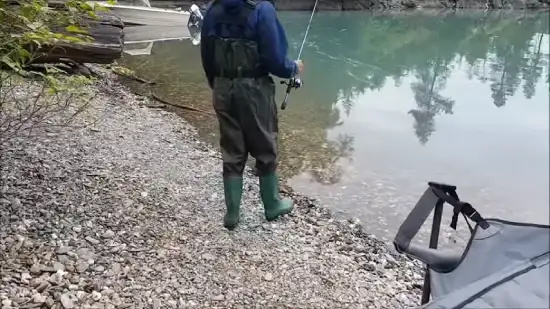
While fishing and hunting waders may seem similar, their distinct differences make them better suited for their respective activities.
Fishing waders are designed with lightweight materials and built in insulation for colder conditions. In contrast, hunting waders are specifically tailored for hunting demands, with camouflage patterns, reinforced knees and seats, and added insulation for warmth and protection.
So, choosing the proper waders for the activity is crucial to ensure optimal performance and comfort. Using the wrong type of waders can compromise your experience and safety.
Do I need to wear shoes with hunting waders?
To truly immerse yourself in the hunting experience, you’ll find that wearing proper footwear with your waders is essential. While some hunters prefer to wear boots with stockingfoot waders, many of today’s top duck hunting waders come with attached boots for a reason.
These attached boots not only provide added warmth but also increase durability, allowing you to navigate through various terrains without worrying about damage to your footwear.
Also, the boots are designed to provide excellent traction on wet and slippery surfaces, ensuring your safety in the field. Wearing shoes with hunting waders enhances overall hunting performance and keeps your feet protected and comfortable throughout outdoor adventures.
Hunting or Fishing Waders: Choose the Proper One Based on Your Needs
It’s clear that hunting and fishing waders have their own distinct features and purposes. When buying hunting waders, look for durability, insulation, and camouflage patterns to blend in with the surroundings.
In contrast, when purchasing fishing waders, focus on comfort, waterproof materials, and pockets for storage. While fishing waders can be used for hunting in some cases, it’s not recommended due to the lack of insulation and camouflage.
Remember the adage, “Don’t try to fit a square peg into a round hole,” and invest in the right waders for your chosen activity.

